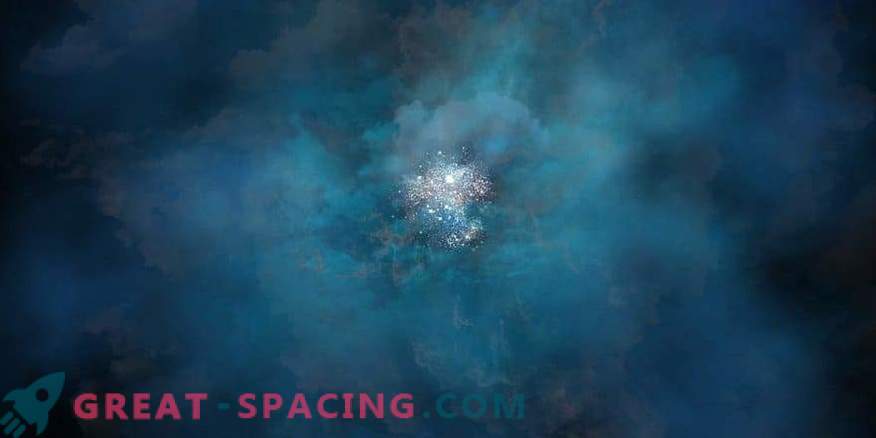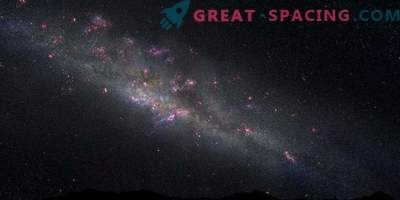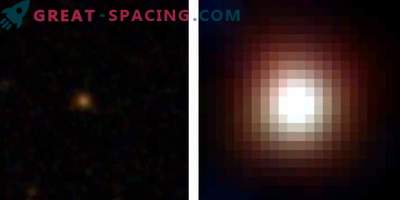
Artistic vision of a gaseous halo around a galaxy illuminated by a narrow strip of UV light (emission of Lyman-alpha). BX418 gas halo is about 10 times larger than the galaxy itself.
A group of astronomers revealed a new way to uncover the secrets of how the first galaxies were formed and evolved. The study first applied new features at the Keck Observatory (Mauna Kea) to study Q2343-BX418. This is a small young galaxy, distant from us by 10 billion light years.
Such a distant galaxy seems to be an analogue of more young galaxies that are too weak to fall into detailed study. Thus, it becomes an ideal candidate for understanding how the galaxies looked after the birth of the Universe. The BX418 also attracts attention due to the fact that its gas halo gives off a special type of light.
Gaseous halos glow with a specific UV-wavelength, referred to as Lyman-alpha emission. There are many theories that produce this emission in the halo. Some of them are associated with light, which is initially generated by stellar birth in the galaxy. The researchers used one of the latest instruments at the KCWI Observatory to conduct a detailed spectral analysis of the BX418 gas halo. Its properties might push clues to stars forming in the galaxy. Halo - a place where gas enters and leaves the system. Gas galaxies are able to feed them. This gas influx and outflow affects the fate of the stars. The influx of new gas guarantees fuel for a new stellar birth, and the outflow limits the galaxy's ability to form new stars.
Analysis from KCWI provides details and clarifies the mapping of the galaxy and its gas halo, which was previously not possible. The tool was specially created to study the thin filaments of a weak gas connecting galaxies (the cosmic web). The strength of the instrument, along with the location of Keck's telescopes, provides the most successful reviews.
The team used KCWI to obtain Lyman-alpha emission spectra from BX418 halo. This made it possible to trace the gas, calculate its speed and spatial extension. Then they created a 3D map showing the structure of the gas and its behavior. The data indicates that the galaxy is surrounded by an approximately spherical outflow of gas, where there are significant changes in the density and velocity range of the gas.
With the new method of studying gaseous halo, scientists hope to get more data and create a full-fledged simulation of the first galaxies of the universe.











































